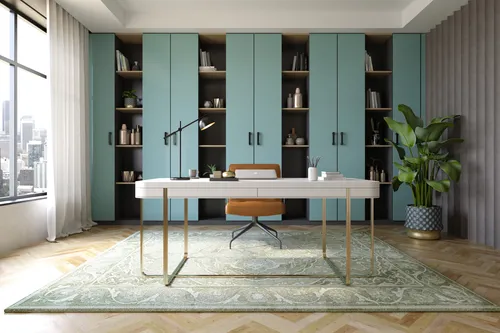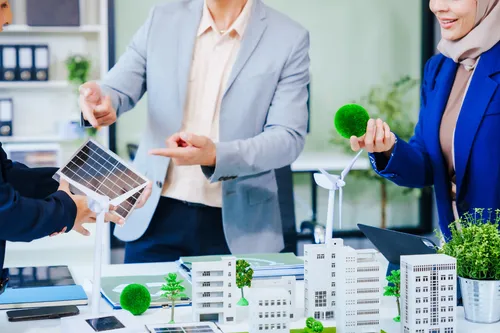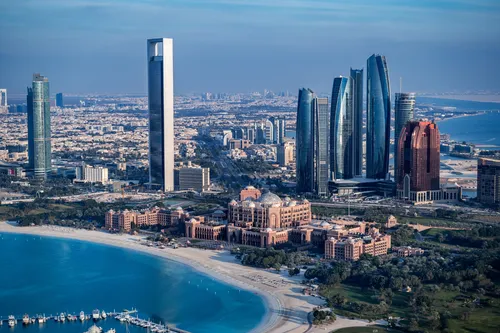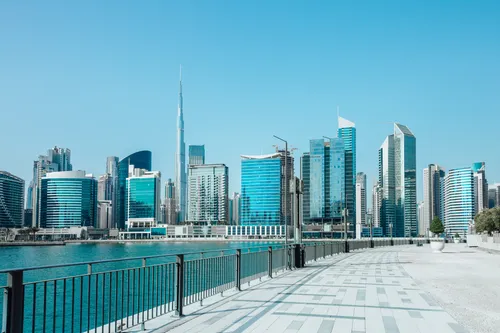
In the dynamic world of modern office design, flexibility and collaboration have emerged as pivotal elements driving innovation and productivity.
As businesses evolve to meet the demands of a diverse and increasingly remote workforce, the design and functionality of office spaces must adapt accordingly. In 2024, flexible workspaces and collaborative zones are at the forefront of this transformation, creating environments that not only foster teamwork but also accommodate the varying needs of employees. This article explores the key trends and strategies for enhancing office spaces through flexible workspaces and collaborative zones.

The Rise of Flexible Workspaces
Adapting to Diverse Workstyles
The traditional office layout, with its rows of identical desks and cubicles, is rapidly becoming obsolete. Today's workforce is diverse, with employees performing a wide range of tasks that require different types of spaces. Flexible workspaces cater to this diversity by offering a variety of work settings within a single office. These settings can include open areas for collaborative work, private pods for focused tasks and lounge-like spaces for informal meetings or breaks.
Reconfigurable Layouts
One of the defining characteristics of flexible workspaces is their ability to be easily reconfigured. Movable furniture, modular walls and adaptable layouts allow companies to quickly adjust their office environments to suit changing needs. This flexibility is particularly beneficial in fast-paced industries where project teams and priorities can shift rapidly. By creating spaces that can be easily rearranged, businesses can ensure that their offices remain functional and efficient.
Technology Integration
Incorporating advanced technology into flexible workspaces is essential for supporting a modern workforce. High-speed internet, wireless charging stations and smart lighting systems are just a few examples of the technological enhancements that can make these spaces more efficient. Additionally, video conferencing equipment and collaborative software tools enable seamless communication between in-office and remote employees, ensuring that everyone remains connected and productive.
Ergonomic and Sustainable Design
Flexible workspaces should prioritize both employee well-being and environmental sustainability. Ergonomic furniture, such as adjustable desks and chairs, can reduce physical strain and improve comfort. Meanwhile, the use of sustainable materials and energy-efficient systems can minimize the environmental impact of office operations. Incorporating elements like natural light, indoor plants and ventilation systems also contributes to a healthier and more pleasant work environment.

Collaborative Zones: Fostering Teamwork and Innovation
The Importance of Collaboration
In an era where innovation and creativity are key drivers of success, collaboration has become more important than ever. Collaborative zones are designed to facilitate teamwork by providing spaces where employees can easily gather, share ideas and work together on projects. These zones can take many forms, from informal lounge areas to fully equipped meeting rooms.
Designing for Interaction
Effective collaborative zones are designed with interaction in mind. Comfortable seating arrangements, writable walls and multimedia capabilities are just a few features that can encourage employees to engage with one another. By creating spaces that are conducive to spontaneous conversations and brainstorming sessions, businesses can foster a culture of collaboration and innovation.
Balancing Openness and Privacy
While open collaborative zones are essential for fostering interaction, it's also important to provide areas where employees can work without distractions. Balancing openness with privacy is key to creating a productive office environment. This can be achieved through the use of acoustic panels, private meeting rooms and quiet zones where individuals can focus on tasks that require concentration.
Encouraging a Sense of Community
Collaborative zones can also help build a sense of community within the workplace. By providing spaces where employees can come together for social events, team-building activities or simply to relax and unwind, businesses can strengthen interpersonal relationships and enhance overall morale. A strong sense of community can lead to increased employee satisfaction and retention.

Table of Contents
Recent Posts
- The Green Shift: How ESG Is Redefining Commercial Real Estate in Dubai
- Flexible vs Traditional Offices in Dubai: Which Model Suits Your Business Best?
- Dubai’s Smart-Building Revolution: How Technology Is Redefining the Modern Office
- Abu Dhabi’s Commercial Real Estate Awakening: The Capital’s New Era of Investment
- Dubai Office Market Overview by Behnam Bargh | CRC Property





